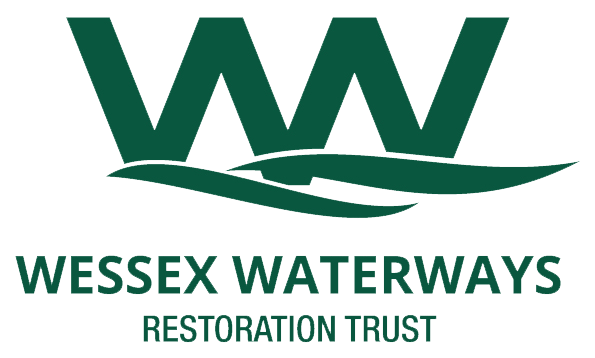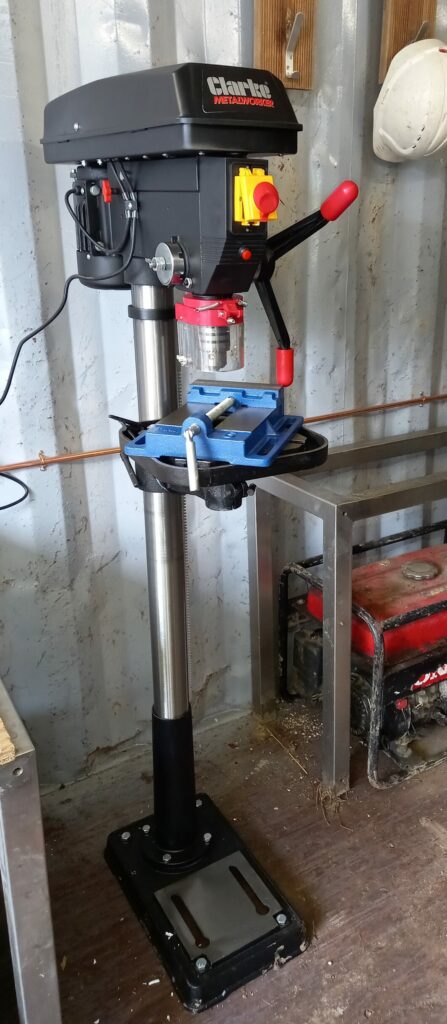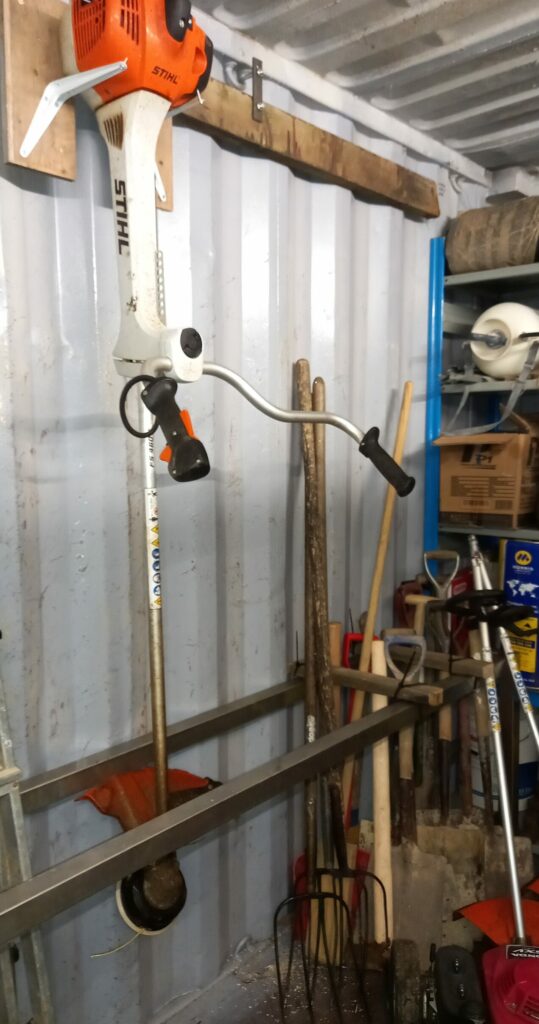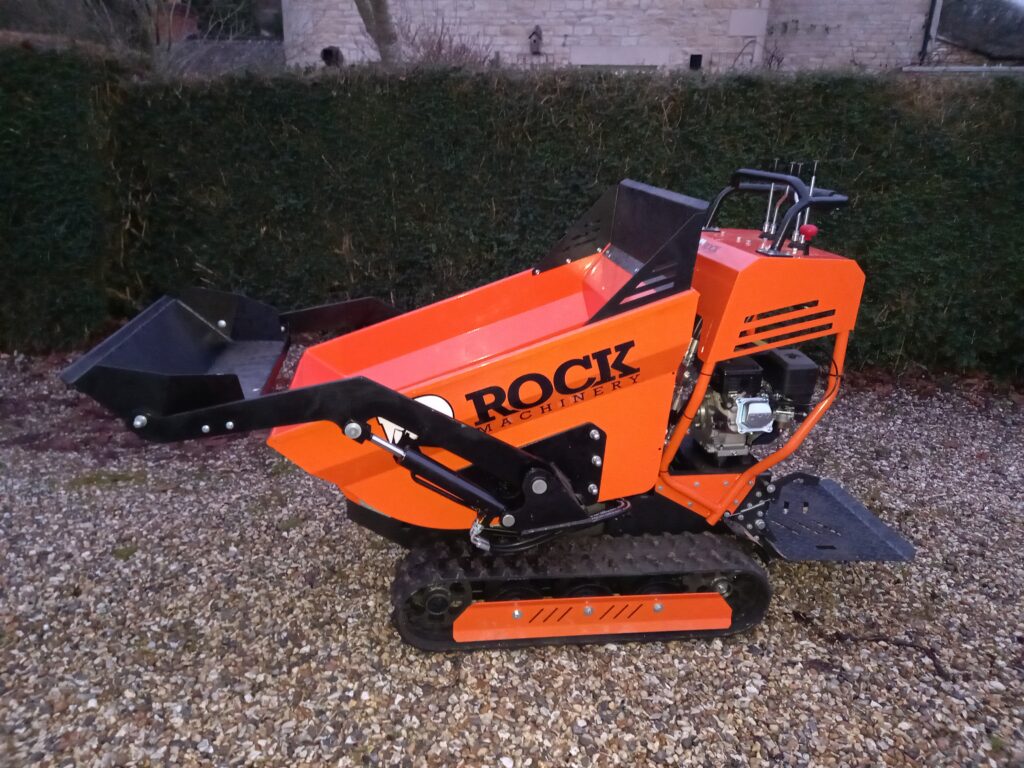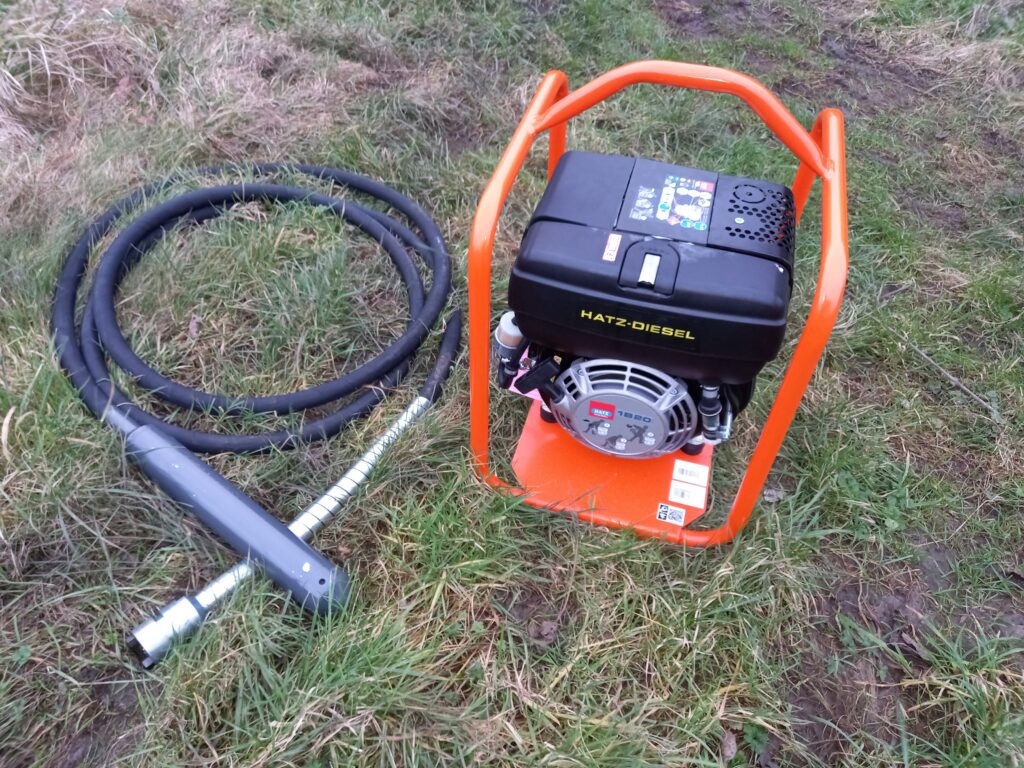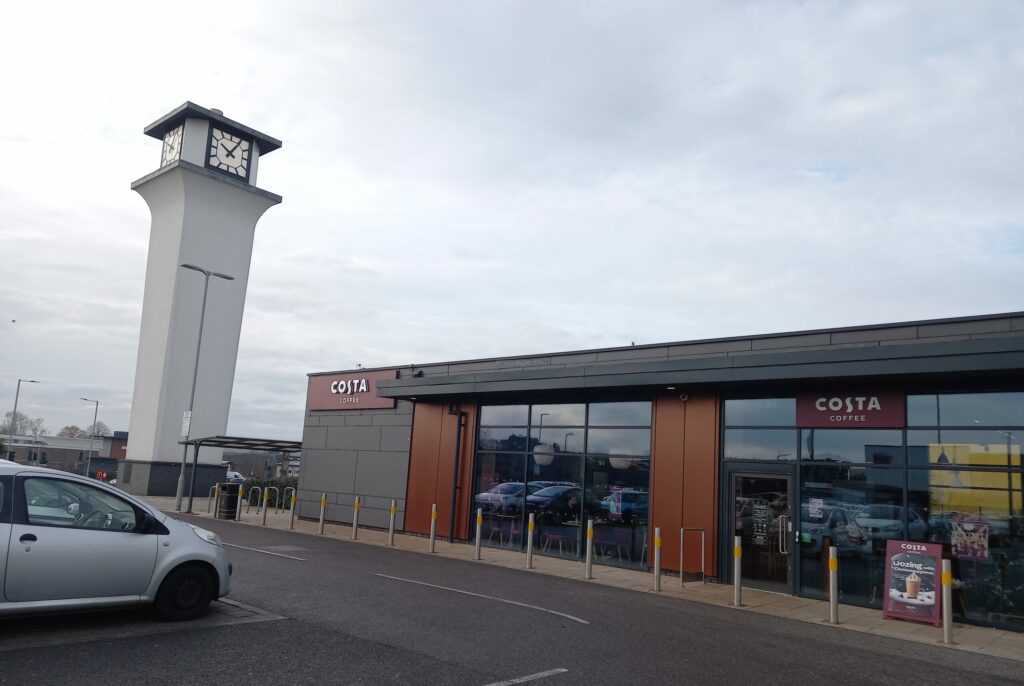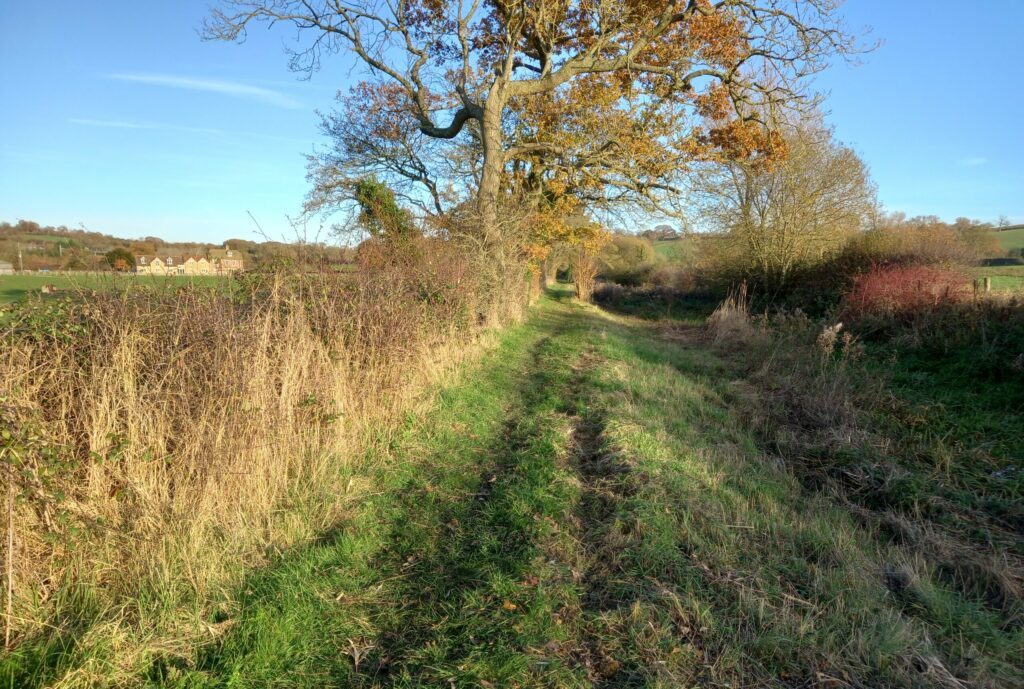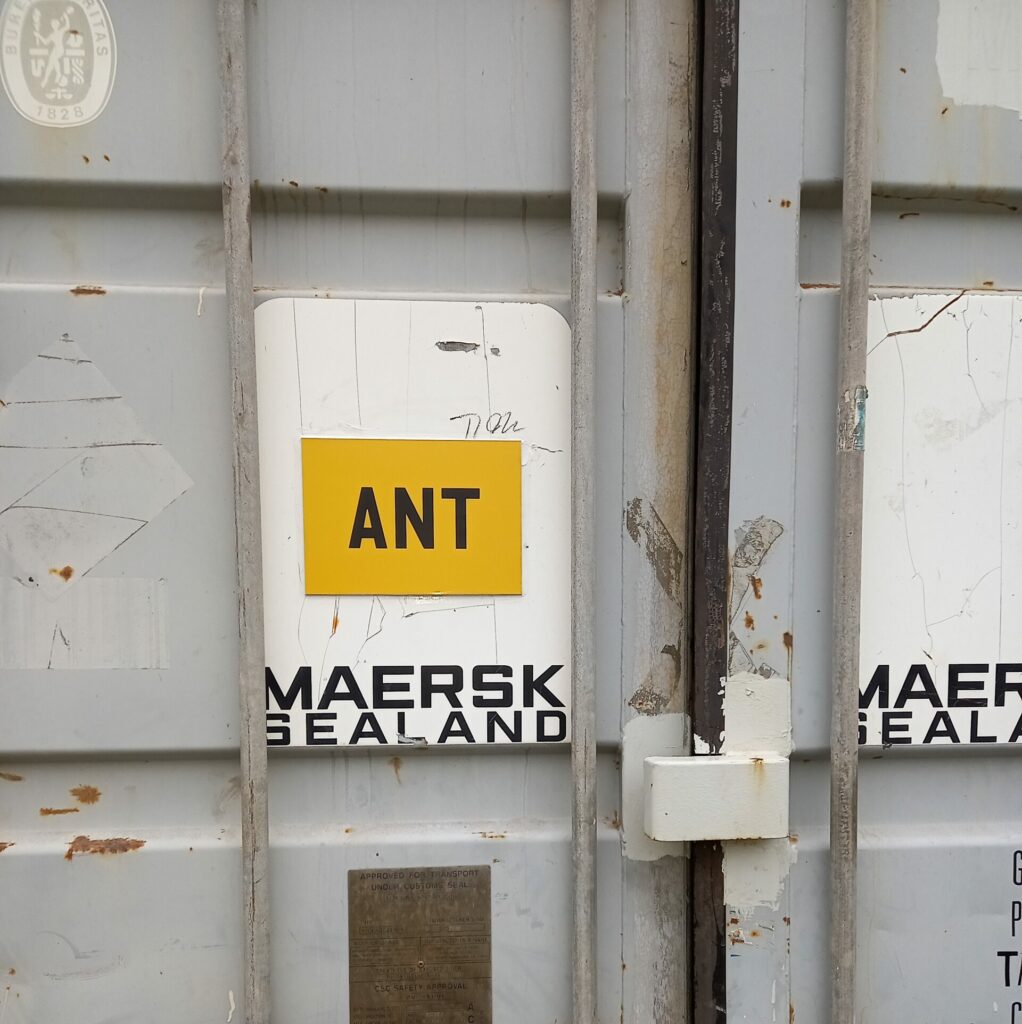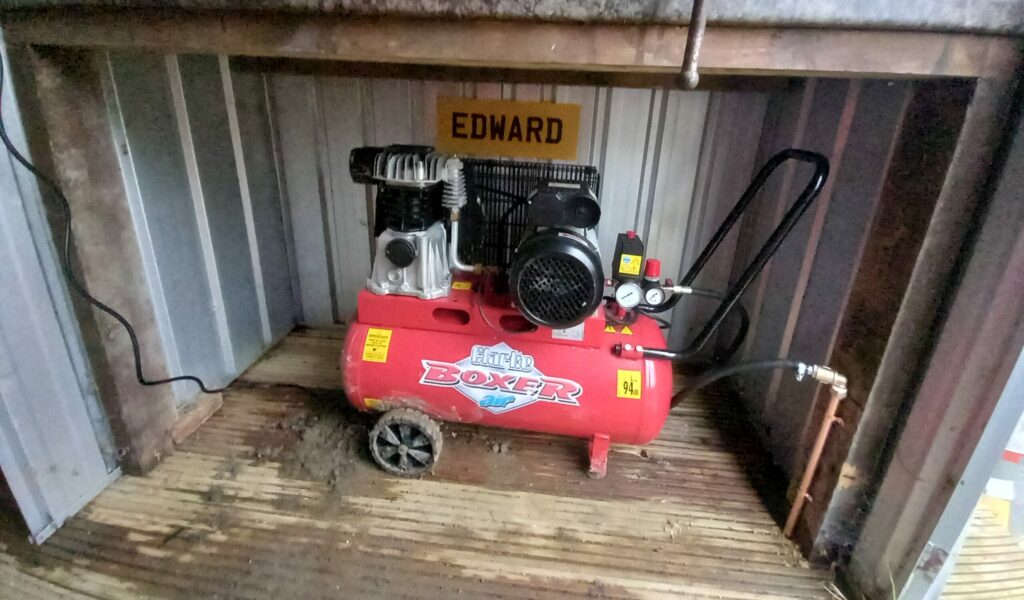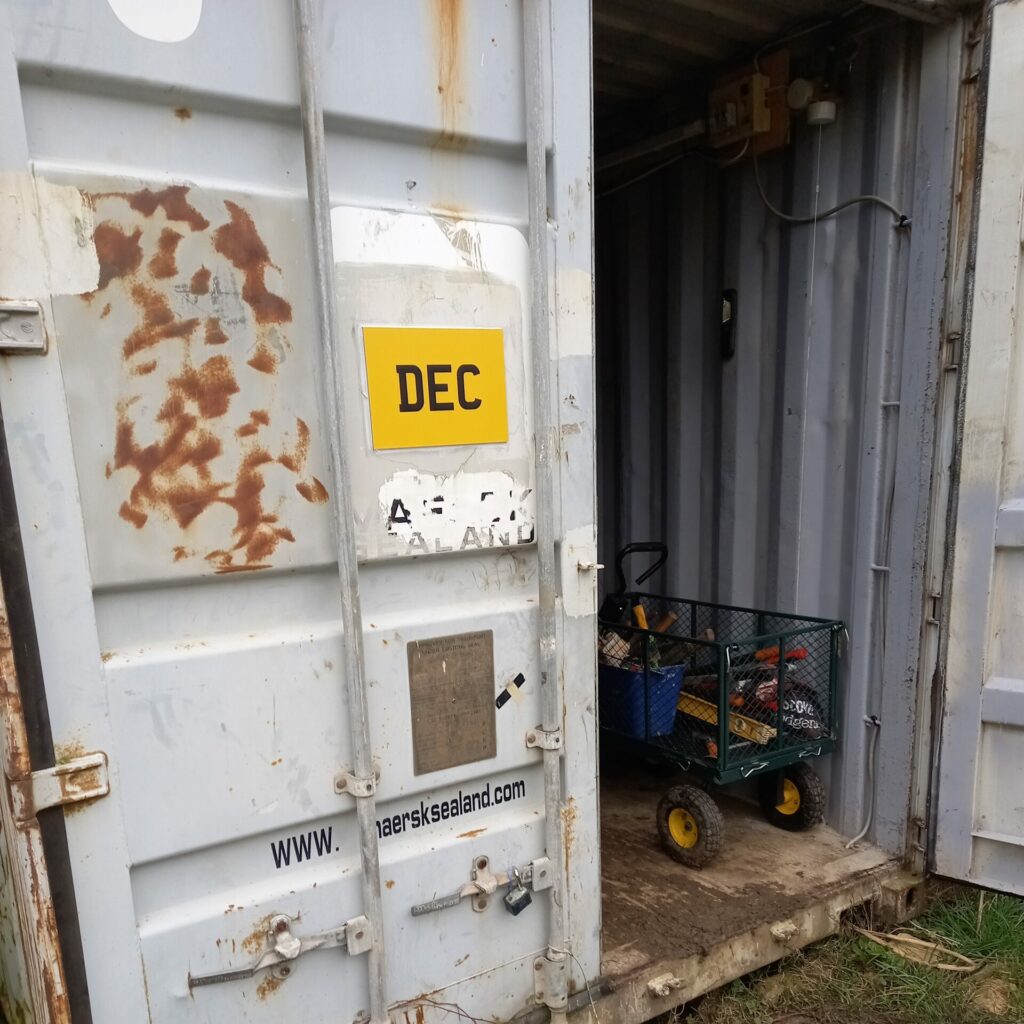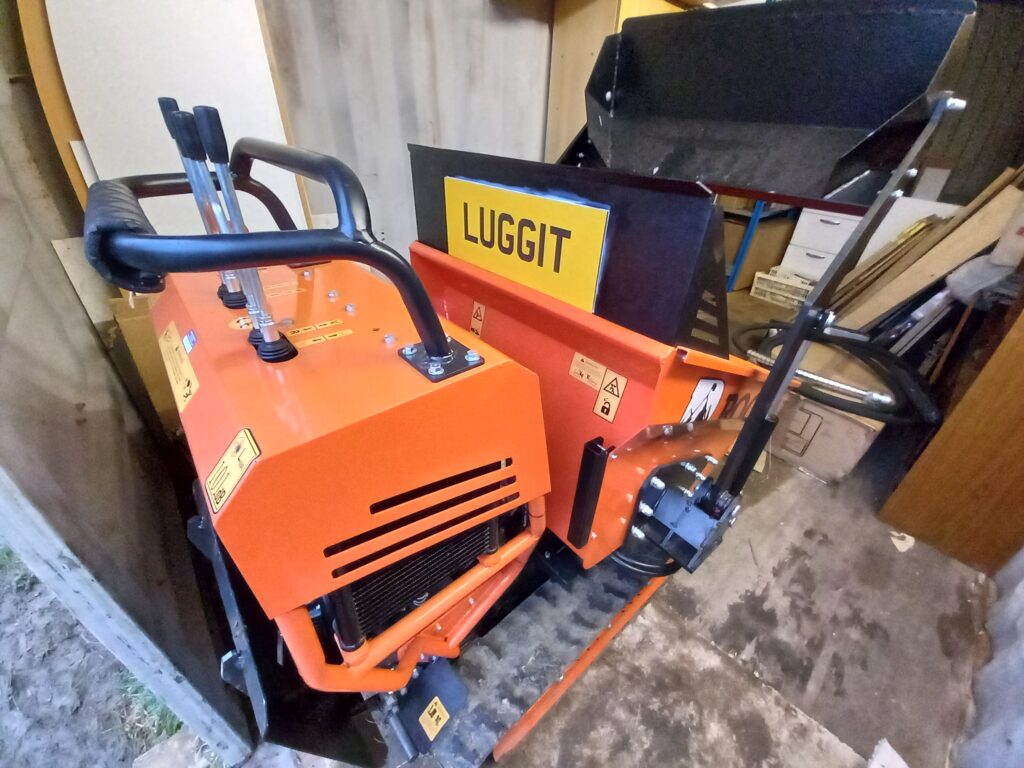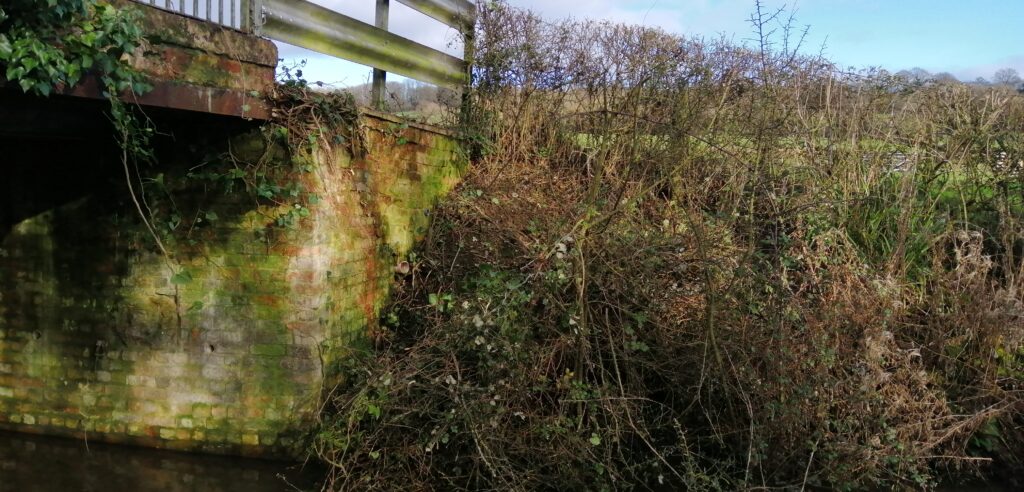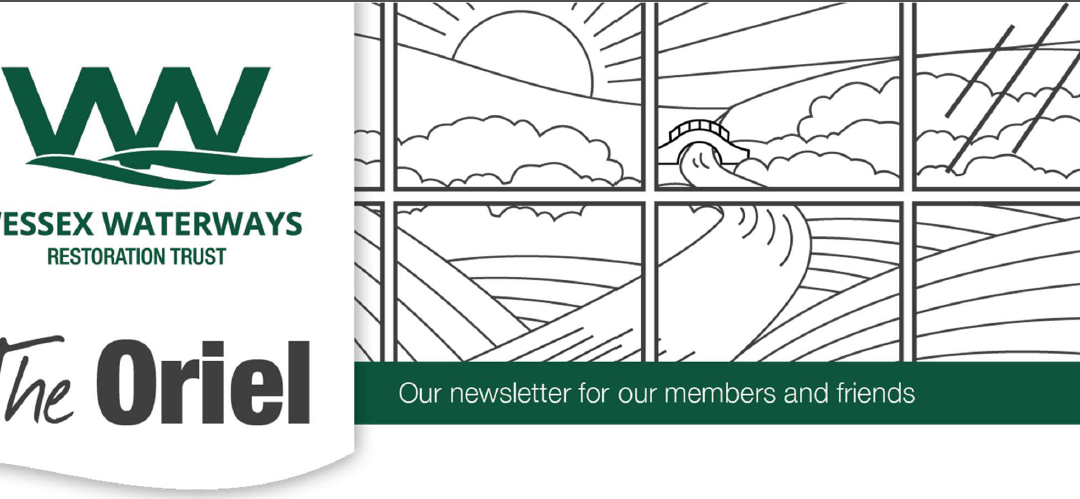
The Oriel Number Ten
Welcome to number ten of The Oriel.
It’s been a while since our last newsletter, but in the last week or so several things have happened which mean that now is a good time to be reaching for the laptop, uploading photos from the mobile phone, and producing this newsletter. I hope you all find it an interesting and relevant read. If you’d like it to be different, please let us know. If you’d like to take a more active role in Wessex by joining meetings, attending occasional work parties and other occasions with a camera, and becoming the author/compiler of The Oriel please get in touch.
Plant maintenance
There have not yet been any offers of help with this aspect of our activities, though we did mention the need in The Oriel number nine. Since then, both of our backpack brush-cutters have been to the repair shop at Greatfield. They are both now back with us. These items see most service in the autumn and winter months trimming back the canal banks, and fortunately that work was nearly complete when we found ourselves with no tools for the job which were both suitable and serviceable. These machines are very specialist and not yet as widely found as I feel they deserve to be. They are not an item that’s readily available to hire.
More progress has been made with establishing the facilities. The pipework is now in place for our air compressor, which has been given the name ‘Edward’ as an approximately matching title was given to an early king of England of that name. There is now a sign on the inside wall of the tin shed where Edward has been installed – photos below.
A new arrival at the workshop, bought with funds from the Bradenstoke Solar Park Community Benefit Fund, is a pillar drill. This has now been securely bolted to the floor of the container, which involved Rachael’s hand on the ratchet spanner on top and Luke lying on the ground with his arm stretched out under the floor of the container holding a spanner. The shelving has been reshuffled to give the space for the pipework for the compressor and for tools to be stored tidily while keeping the work bench clear for use.
Oriel Bridge – preparations to start work continue
For some years we have been doing preparatory work to do major repairs to a former arch bridge over the canal within Park Farm at Foxham. This preparatory work has continued – though not yet started on site – with the acquisition of some tools we will need. These were funded with the help of the Bradenstoke Solar Park Community Benefit Fund – one comment from them at the application stage was that these tools weren’t what they would normally expect typical volunteers to need. That must say something positive about our volunteers – that they have specialist skills and expertise to a level something above the typical expected for volunteers. Wikipedia tells me that Yogi bear described himself as ‘smarter than the average’ so the similar description can be applied to volunteers of Wessex Waterways. The items we now have ready to put into service when needed are a mini-dumper, which has gained the name ‘Luggit’ and a diesel-powered vibrating poker to compact the concrete into position to repair the abutments of the bridge.
Wider afield
It’s inevitable that most of the photos taken for The Oriel are on locations close to or on the line of the canal in Wiltshire. Photos are taken elsewhere on occasions – there should be photos taken in Northampton next month when two of our trustees attend the national-level conference for waterways restoration trusts organised jointly by the Inland Waterways Association and the Canal and Rivers Trust. Meanwhile, a famous landmark in Chelmsford, Essex is the Clock Tower near the A1016 leading into Chelmsford from the south-west, and this has figured in our activities. A recent return to the board of Trustees of IWA is Mr Paul Strudwick. Luke met up with him some years ago and received the benefit of his advice on a situation that existed back then. Paul has an active and detailed understanding of the operations of waterways restoration trusts – like Wessex Waterways and many others in the UK. He was re-elected onto the board of IWA last summer, the news reached Luke, and an arrangement was made to meet for coffees at a venue next to the Clock Tower. They’ve been in touch by email since then, but The Oriel is not the place to report on what was discussed.
Maintenance progress
Recent Saturdays have seen our team continue with managing the vegetation on the towpaths, hedges, and banks. Two Saturdays ago we’d exchanged text messages with Farmer Michael Kinch at Foxham about a fallen ash tree directly across the canal a little way south of Oriel Bridge. Michael was pleased for us to do what we could, removing and stacking the branches and the smaller material. He’ll be there with a tractor to pull the trunk onto the bank when the ground isn’t so soft and wet. He came up to see our progress towards the end of the morning when our work was completed, and we were tidying the site and gathering our tools for the long walk back to our cars parked near Foxham Lock. He was pleased with our work and thanked us.
After The Vandals
Encouraged by our friends on Bremhill Parish Council, Luke asked our contact at Wiltshire Council who had been pleased for us to repair the damage to the Elephant Lift Bridge deck if the Council would be able to reimburse some of the money we had spent on materials. Oak beams cut to specific sizes are not cheap!
The relevant officer at Wiltshire was well-informed about the legal position. Under the 1914 Act of Abandonment (of which we have a copy, but it didn’t occur to us to re-read it on this occasion) there is a specific duty on Wiltshire Council to maintain all the public crossings of the line of the former canal. Obviously, we know that the road crossings – Bowds Lane at Lyneham, the B4069 at Dauntsey Lock, and something over 20 others along the line of the canal in Wiltshire – are in the care of Wiltshire Highways. It was a pleasant surprise to learn that this extended to all public footpath crossings of the canal in Wiltshire. An invoice was duly created (our first one) by our Treasurer Matt Carpenter and submitted (by email, of course) to Wiltshire Council. Payment landed in our account not many days later. A big thank-you to Steve Leonard and to Chris Pearce at Wiltshire Council, and to unknown Swindon Borough Council staff or other officials helping them in the early years of the 20th Century for having put those words into the Bill that went to Parliament and became the Act of Abandonment.
Our website
This is an area where we rely on a volunteer who is more closely involved in a waterway restoration project in Buckinghamshire. As mentioned in The Oriel number nine, Alan has now fixed it for visitors to the website to view the drone footage taken by our local friend (and professional plumber) Steve Court. The videos last for a few minutes each and are accompanied by a musical soundtrack. There is a written description on the website to explain what’s shown. If you’ve wondered what the canal looks like between the Elephant Lift-bridge and Hignetts Hole, the aerial views are on our website ready for you to see. Also viewable is the section within Rachael’s ownership which we’re not yet able to open to the public. Rachael is still progressing that initiative and we are still keeping the towpath in good order for pedestrians, apart from one short section just east of the lock chamber. A big thank-you goes to each of Steve and to Alan for their help.
WRG visitors between Christmas and New Year and subsequently
Rachael welcomed a team of volunteers to her home and her extensive ‘garden’ (the section of the canal about extending half a mile westward from the end of her small orchard) for several days between Christmas and New Year. There has also been a weekend visit by WRG BITM continuing that work, using the workboat ‘The Peterborough’ as a floating platform to access the offside to manage the vegetation there. Helpful in this task was a long staging board on loan from Rachael’s neighbour Nigel on the opposite bank of the canal. Thanks, Nigel, for this – we’re aiming to return it in better condition than when it was received. These visits were unable to do any work to complete the repairs at Hignetts Hole on account of water levels being about as high as they ever get.
The excess water also made its impact on the workboat – which became tilted over with the gunwale below the surface of the water. In this situation, it filled with water. The rescue attempt we tried first involved our small tirfor, a second one borrowed from the WRG BITM toolvan which is parked at Rachael’s when not needed out on a worksite, and the petrol-powered pump that Gordon bought when he was leading the Group of Friends’ team before Wessex Waterways was formed. Those resources had the desired effect, and we are now confident there wasn’t a major leak in the hull of the boat. To avoid a recurrence Rachael has bought two electric pumps with float switches, and we now have a suitable power cable that will connect with the big supply socket beside her front door. When the boat starts to look a bit fuller of water than we wish one of the pumps will be deployed for a few hours, with the boat moored opposite Rachael’s front windows. We’ll unplug the supply to the Toybox area (the containers do have an emergency lighting facility) and connect a pump to de-water the boat.
Our thanks go to all the visiting people, including the WRG BITM people, for their valuable support and great work.
Signage
We have signage at the entrances to most of our sites to inform pedestrians passing that way. The signs include the Wessex Waterways and our website address, but the plywood boards they were mounted to have proved to be not so durable as we wanted them to be. The ‘Mark 2’ approach involves several coats of yacht varnish on the board before the sign is screwed to it. Time will tell how long these upgraded signs will survive before needing replacement.
Also, under the heading of signage, I can mention that Larry has sourced and funded some signs for items around us which have been given names.
The Oriel number six mentioned the arrival of the two 20-foot shipping containers in April of 2022 and it has become necessary to have some nomenclature that is specific about which container is which. Larry has proposed ‘Ant’ and ‘Dec’ as the distinctive, readily memorable, short words to be used.
Therefore, Ant and Dec are the shipping containers, Edward is the Compressor, and Luggit is the mini dumper. Photos below.
Oriel Bridge, Park Farm, Foxham
The last mention of our progress on this structure was in The Oriel Number 8. At that time, we had received a design solution from John Sreeves which left it for Luke, with help from Henry Smith, to complete the list of materials and volumes needed to do all the necessary repairs. Producing the total budget has taken some time, and at the time of writing some technical input is awaited from a member of the team that did some painting for a power station project that Luke is working on in his day job.
We are expecting the total cost for materials to be something over £13,000 and, having arrived at that figure we are looking for contributions. If you, reading this, wish to help us on our way please would you post a cheque, payable to Wessex Waterways Restoration Trust, to Luke at 81 Anchor Road, Calne SN11 8EB. Those of you who do their banking over the internet have the easier method of making a payment direct to our bank account, which is WESS WATE REST T, sort code 20-98-68, account number 93298345. An even easier process, which gives the option to add gift aid if you are a UK taxpayer which we can recover with the help of Charities Aid Foundation, is to visit our website and click on our Donate button.
Any gifts to support us with this, our first significant restoration project, will be gratefully received. Progress of the work (when we have raised sufficient funds to make a confident start) will appear in future issues of The Oriel. We look forward to sharing that news with you all.
Distribution of The Oriel
One of our members raised the question at the recent AGM about whether we send The Oriel to people who have not paid membership subscriptions that have fallen due. The answer is that we have done and will continue to do so until the volunteer who has offered to help with our membership correspondence and records is able to step into that role. We have mentioned this at previous members’ meetings. This practice reflects the present board having prioritised making progress on the canal restoration project as required in our Constitution. We have maintenance work to keep on top of – the grass does not stop growing – and a limited number of volunteers who join us each week to help with that work. We are grateful to all those who have joined Wessex Waterways as members, and it costs us almost nothing (financially or human effort) to include all of them on our email shots. We respect them for having shown an interest in what Wessex Waterways does and are proud to keep them informed. Anyone who wishes to not receive our mailings is (under GDPR) entitled to request that we stop sending mailings. When we hear from anyone making that request, we comply with it, and (if appropriate) send an email to confirm receipt of their request and of their removal from our distribution list.
